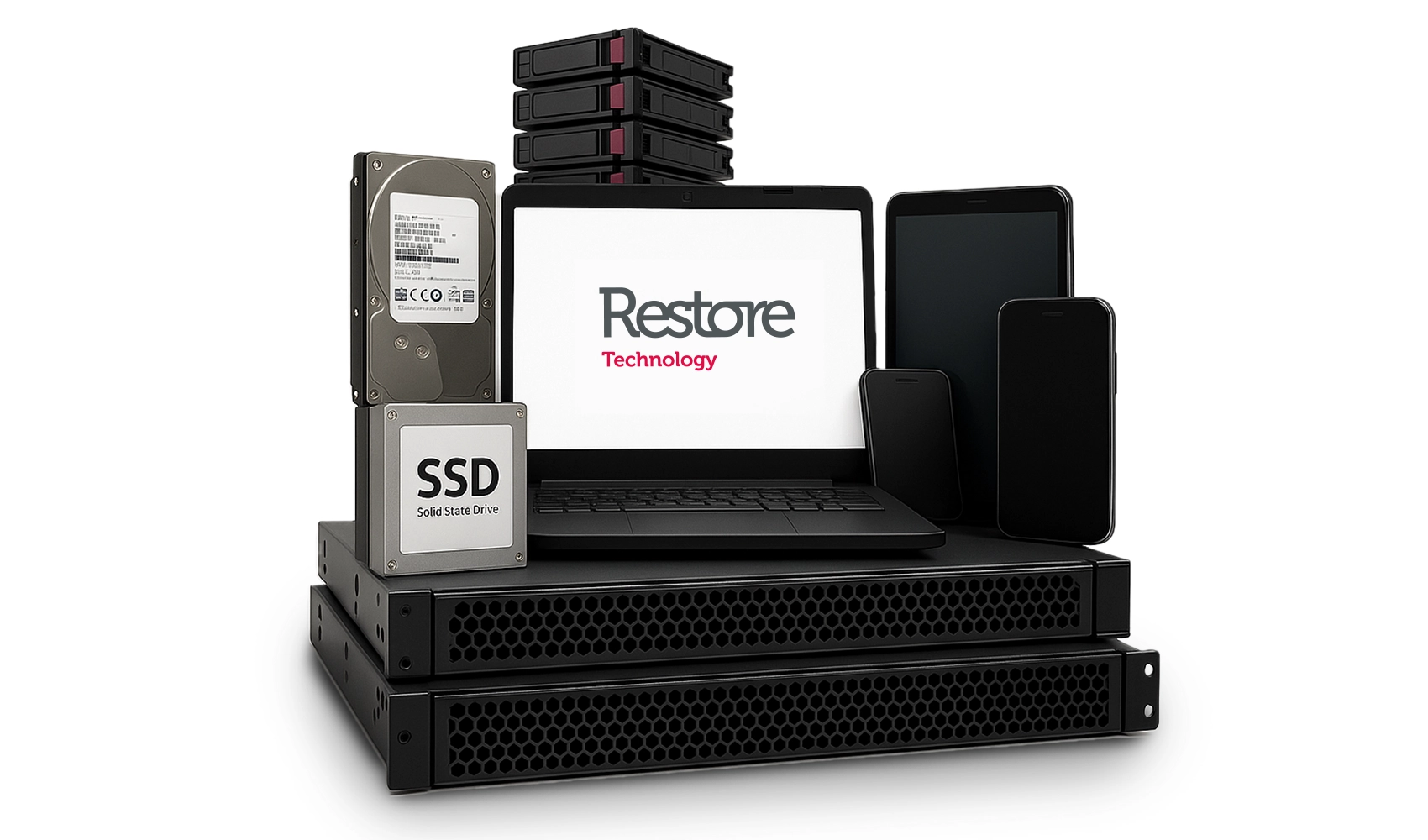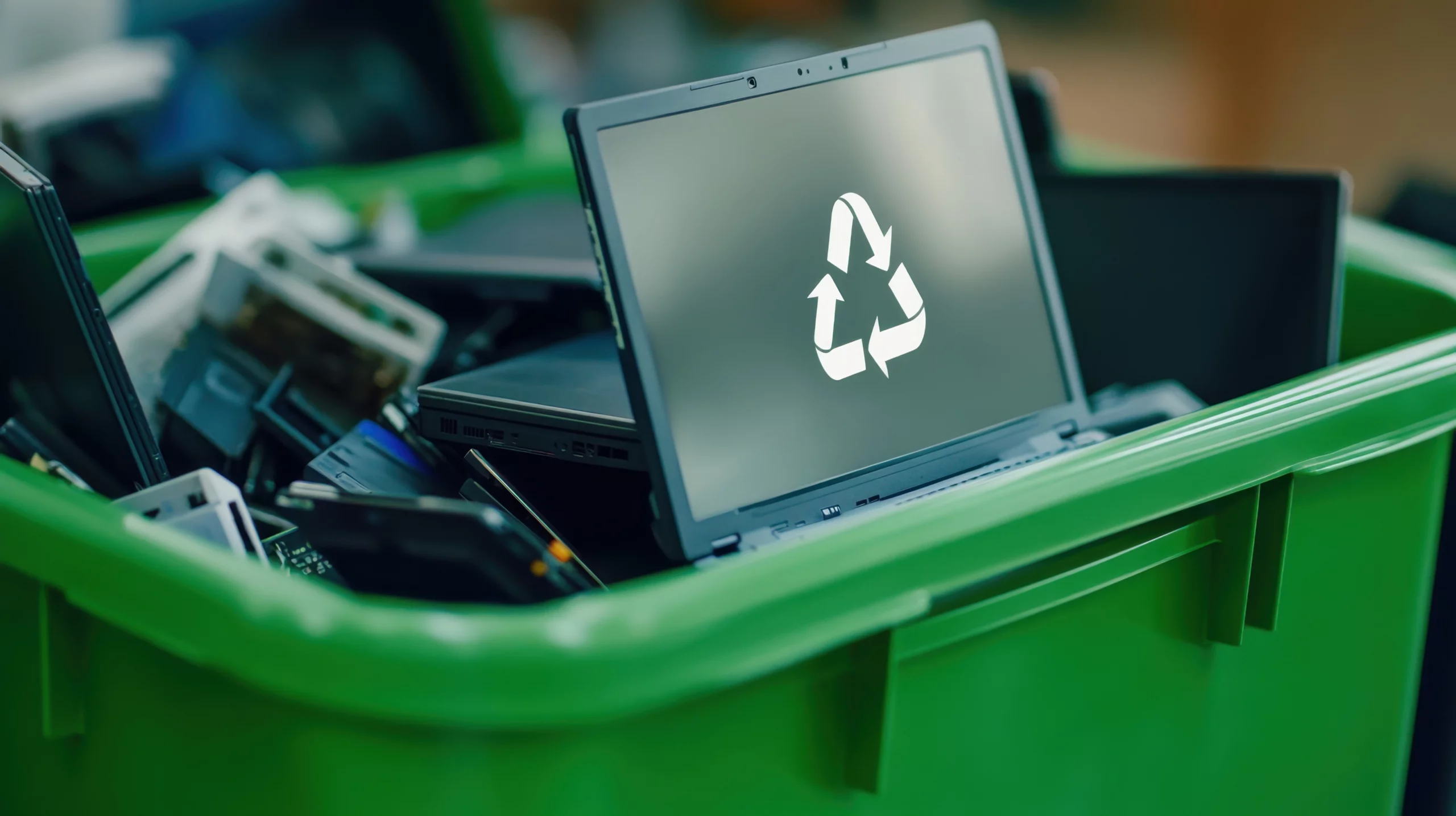
When IT equipment reaches the end of its lifecycle, proper disposal is essential. “Asset disposition” (which can also be called asset disposal) is the process of terminating or destroying an asset that is either outdated or obsolete. When done properly, disposing of unnecessary assets can enhance overall maintenance, save costs, and minimise risks.
Inadequate end-of-life IT asset management can expose organisations to data breaches, penalties for non-compliance, and unnecessary environmental harm. It is because of this that a secure, compliant, and sustainable IT asset disposal policy is no longer an option but a necessity.
Why is it important to dispose of IT assets properly
Organisations have to regularly audit their assets to determine when they are no longer generating value and should be disposed of. Here’s an overview of some of the main advantages of proper IT asset disposal
1. Cost savings
This relates mostly to the possibility of repairing assets rather than replacing products at your own expense or reselling them to recover a portion of their original value. Additionally, organisations can reduce maintenance and storage costs by disposing of assets they no longer need, freeing up space and resources for more productive endeavours. Responsible IT asset disposal also avoids costly fines for data loss or improper waste disposal.

2. Compliance and risk mitigation
Materials found in many devices are hazardous to both humans and the environment, particularly if improperly disposed of. This explains why e-waste laws in the UK are so stringent and explicit. Adhering to the current environmental standards, which have been enacted in many nations, is essential to the proper disposal of IT assets – avoiding the possibility of fines or reputational damage due to non-compliance.

3. Carbon footprint
Proper IT asset disposal is sustainable, extending the lifecycle of certain assets by ensuring they’re re-used and recycled rather than going straight to landfill.

4. Data security
Data security is often one of the most overlooked areas of IT disposal, despite it being a vital concern as it involves the secure deletion of data from the devices before disposal, resale, or recycling.Old devices often contain sensitive information, so this step is crucial to prevent potential data breaches arising from improperly discarded IT equipment. The reality is that you could still be subject to a breach if data isn’t properly erased beforehand.

Key rules and regulations for IT asset and equipment disposal

The main purpose of the Waste Electrical and Electronic Equipment (WEEE) Regulations 2013 is to reduce waste (and its associated environmental impact) through the recovery, reuse and recycling of electronic devices. It should be noted that some goods do not fall within the parameters of Electrical and Electronic Equipment (EEE) as specified by these regulations. These include military hardware, integrated vehicle systems, space equipment, large-scale industrial tools and installations, and some medical devices.

The Data Protection Act of 2018 and the UK General Data Protection Regulation (UK GDPR) both regulate the gathering, storing, and use of personal data by organisations, including corporations and governmental entities. Unless an exception applies, everyone handling personal data must adhere to stringent data protection guidelines. According to these guidelines, information must be used in a fair, legal, and transparent manner, for precise, well-defined purposes, and only in ways that are sufficient, pertinent, and restricted to what is required. Additionally, personal information must be correct, updated, and not held for longer than necessary while also being protected against loss, damage, and unauthorised access.

The Environmental Protection Act of 1990 is a comprehensive statute designed to preserve and safeguard the UK’s environment, offering significant legal guidance pertaining to the reduction of air, water and land pollution. It stipulates duty of care concerning waste, holding responsible producers, transporters, and disposers accountable

The ISO/IEC 27001 standard offers guidelines for creating, implementing, maintaining, and continuously enhancing an information security management system to businesses of all sizes and in all industries. Compliance with ISO/IEC 27001 involves implementing a robust risk management system for all data owned or handled by an organisation.
In addition to legal frameworks, industry-specific standards may also apply. For example, financial institutions may be subject to FCA guidelines around secure data handling, while public sector bodies must adhere to government disposal frameworks.
Methods, processes and procedures for disposing of IT equipment

Every piece of equipment should be properly logged, tagged, and monitored for complete visibility throughout its lifecycle. Restore Technology offers advanced tracking solutions that provide detailed audit trails, from initial collection to secure data destruction, recycling, or resale, ensuring compliance, transparency, and accountability at every stage of the process.

The following are commonly used and approved techniques which guarantee complete adherence to legal and industrial standards while permanently erasing sensitive data:
- Degaussing: This process demagnetises data storage devices, rendering them unusable.
- Certified data wiping: This involves repeatedly overwriting data to eliminate any chance of recovery.
- Physical destruction: This involves shredding storage devices and hard drives into tiny, irreparable pieces.
These techniques provide total data security, shielding private data and defending companies against intrusions.

The safe handling of IT assets begins with secure collection and transit. Restore Technology provides GPS-tracking and lockbox services, as well as staff who are fully-vetted and trained to guarantee safe and accountable transport. This secure chain of custody makes sure equipment is protected from collection through to final processing, offering complete peace of mind.

Sometimes it is possible to prolong the life of usable hardware and lessen its environmental impact by carefully refurbishing and reselling it. Any parts that cannot be reused should be properly disassembled and recycled. Each step of this procedure should also be thoroughly recorded and certified to satisfy compliance requirements.

Accurate documentation is essential to responsible IT asset disposal. A transparent audit trail helps companies fulfil legal obligations and demonstrate due diligence. This includes keeping certificates of destruction and recycling, which aid internal and external audits by proving complete adherence to WEEE (Waste Electrical and Electronic Equipment) standards and data protection legislation.
How to create an IT asset disposal policy

Your policy should clearly state:
- The goals of your disposal programme
- Which types of assets are covered (desktops, laptops, servers, etc.)
- Who is responsible for overseeing disposal


This forms your IT asset disposal process, and should include:
- Asset identification and logging: Recording of all hardware that is operational, to be destroyed or transferred to secure storage (if needed)
- Certified data destruction methods: Ascertaining how various assets will be destroyed as well as what’s reusable or recyclable.
- Certificate issuance and audit documentation: Obtaining proof that the destruction happened properly.

Make sure staff understand their role in the policy, from data handling to reporting retired equipment. Update your policy annually or after any regulatory changes. To support your strategy, consider using an IT asset disposal policy and procedure checklist to ensure consistency and completeness.

Organisations should establish precise criteria for initiating IT asset disposal to preserve efficiency and security. These usually include failed device health checks, lapsed and outdated warranties, or equipment reaching a predefined age or end-of-life status.
Businesses can proactively manage disposals, lower the risks associated with obsolete or malfunctioning technology, and guarantee secure and timely processing by integrating these triggers into an IT asset lifecycle management plan. Regulatory compliance, operational continuity, and efficient resource allocation are all supported by this methodical approach.

IT asset disposal best practices
It takes more than just clearing out outdated equipment from the office to develop a safe, long-lasting, and expandable IT asset disposal plan. Businesses must implement transparent and uniform processes as data protection laws become more stringent and sustainability standards rise.
Businesses may reduce risks, show compliance, and get the most out of their IT lifecycle by adhering to these best practices:

Centralising the supervision of IT disposal inside a particular team or department is one of the best strategies to guarantee uniformity. Everything from documenting retired assets to communicating with approved disposal partners should be handled by this group. A centralised strategy guarantees accountability across departments and locations and gets rid of dispersed efforts. Additionally, it streamlines the entire process of disposing of IT assets by making communication with ITAD providers like Restore Technology easier.

To avoid data breaches and asset loss, every item should be tracked from the moment of retirement to its final destination (whether this involves resale, recycling or destruction) – this is known as the chain of custody. Restore Technology’s secure transport and tracking systems ensures that the disposal of redundant IT equipment is verifiable, secure, and fully auditable.

Merely deleting files or formatting drives isn’t enough to meet data protection standards. To guarantee complete security, businesses should only use certified methods of data destruction, such as software overwriting, degaussing or physical shredding. Restore Technology follows ISO 27001 and other certified methods to meet even the strictest security requirements for IT asset disposal.

Environmental management and the appropriate disposal of IT equipment go hand in hand. Making recycling or remarketing a top priority wherever feasible is a crucial best practice. This promotes a circular economy, reduces e-waste, and prolongs the life of usable electronics.

Every asset disposed of should be accompanied by clear documentation. This includes:
- Certificates of data destruction
- Certificates of recycling
- Serial number logs and detailed asset reports
Maintaining accurate records is essential for demonstrating compliance with IT disposal regulations and supporting internal audits or ESG reporting.

Routine audits can highlight opportunities for improvement, identify compliance gaps, and verify that the proper IT asset disposal procedures are followed. They can also help ensure that your IT asset disposal process flow is up to date and compliant with changing requirements.

IT asset disposal is not just the duty of the IT department. Everyone in the business, from procurement to HR, should be familiar with the relevant procedures and guidelines. Therefore, consider integrating asset disposal policies and procedures into the onboarding process, with regular training and company-wide audits where appropriate.

Disposal restrictions for IT equipment, such as WEEE, GDPR, and the Environmental Protection Act, are susceptible to change. To remain compliant, firms should continuously monitor legal revisions and revise their policies accordingly.

A successful IT disposal policy directly supports your environmental, social, and governance objectives. Whether you want to minimise carbon emissions and waste or improve data governance, prudent IT asset disposal is critical.

Decommissioned equipment should be stored in secure locations, with access restricted to authorised persons. This is especially relevant in large or decentralised organisations because assets may be idle before collection.

Tracking performance helps you optimise your IT asset disposal strategy over time. Common metrics include:
- Time from decommission to final disposal
- Resale value recovered
- Percentage of assets recycled or reused

If outsourcing, it’s essential to verify that your ITAD partner meets all relevant certifications and legal obligations. This includes secure downstream recycling, responsible handling, and data destruction standards.

Tagging assets with unique identifiers ensures they are tracked and reconciled correctly throughout the disposal journey. Whether through barcodes, QR codes, or RFID, tagging supports accurate reporting, minimises asset loss, and supports regulatory audits.

Dispose of IT equipment safely and securely with Restore Technology
Want to collaborate with a market-leading provider of IT asset lifecycle and disposal services? Get started by reaching out to a member of our knowledgeable customer services team. Give us a call on 0333 060 1920 or reach out today for a quote.
